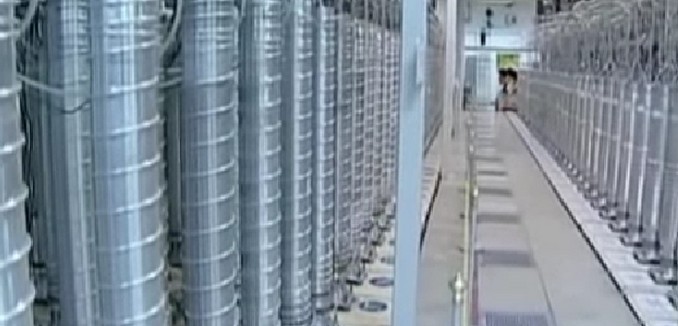Leading nuclear experts have raised concerns that the terms of the Joint Comprehensive Plan of Action (JCPOA), which was agreed to last month between the P5+1 nations and Iran, do not account for Iran’s stockpile of low-enriched uranium (LEU).
David Albright, the executive director of the Institute for Science and International Security, and Serena Kelleher-Vergantini, a research analyst at the think tank, wrote in a paper published Monday that Iran has converted all of its 20% LEU in the form of gas, but since the LEU still exists in other forms, it could easily be reconverted to its gaseous form, significantly reducing Iran’s breakout time. Specifically, the paper refers to the 46 kilograms of 20% LEU in the form of an oxide powder.
The U.S. Fact Sheet which outlines the parameters of a long term agreement with Iran does not discuss the fate of the near 20 percent LEU. It does discuss a cap of 300 kg of LEU in Iran but this cap refers to LEU enriched under 3.67 percent and not the near 20 percent LEU. U.S. officials have stated that the near 20 percent remaining in Iran would need to be mixed with aluminum, a step in making the fuel, or be in TRR fuel elements. Once so mixed, U.S. officials have stated that they remove this near 20 percent from consideration in breakout calculations. However, it is unclear if Iran has accepted this condition and more importantly whether this removal is justified. The U.S. condition in fact may undermine its claim that the limits on Iran’s centrifuge program achieve a 12 month breakout.
The amount of Iran’s near 20 percent LEU, in any form, should be reduced as much as possible to ensure that breakout periods remain at least 12 months, whether discussing overt or covert routes. The reason is simple: not only is the LEU oxide powder easily re-convertible to hexafluoride, but other forms of near 20 percent LEU can be recovered into hexafluoride form in a straightforward manner, even when in a uranium/aluminum mixture in fuel or in a production form. Once reconverted to a hexafluoride form, this LEU can be used in a breakout, significantly lowering breakout timelines because near 20 percent LEU is much closer to weapon-grade uranium than 3.5 percent LEU or natural uranium. For example, if Iran can reconvert simply 50 kilograms of near 20 percent LEU exafluoride (about 36 kilograms uranium mass), or about 16 percent of its current stock of this material, it can reduce a 12 month breakout timeline to about eight months. A rule of thumb is that in a breakout 50 kg of near 20 percent LEU hexafluoride is worth 500 kg of 3.5 percent LEU hexafluoride.
President Barack Obama has said that the goal of the emerging deal is to ensure that Iran’s breakout time will be at least a year. Yesterday’s report suggests that there is a significant loophole that could reduce Iran’s breakout time significantly. Albright is one of the recognized scientific experts in the field of nuclear proliferation, and his institute has endorsed other elements of the JCPOA.
Other experts, including former deputy director general of the International Atomic Energy Agency Olli Heinonen, have questioned if the one-year breakout time would provide sufficient time for the world to react against any Iranian violations of a future nuclear deal. Questions also have been raised about Obama’s reassurance that sanctions could be “snapped back” into place if Iran violated parameters of the JCPOA.
[Photo: euronews (en français) / YouTube ]




